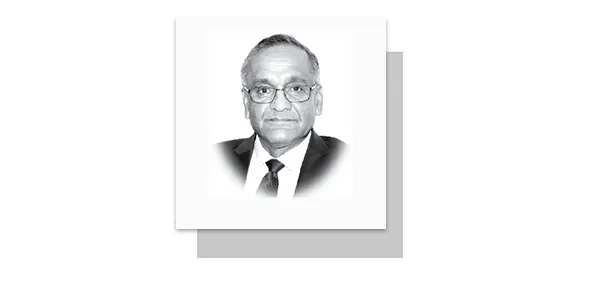STONE on the grave of Queen Noor Jahan in Lahore reads, “Bar mazar-i-ma ghareeban, nay chiragh ne gule; Naay par-i-parwanasozad, nay sadaa-i-bulbuley” (Translation: On the grave of this stranger, let there be neither a lamp, nor a flower; neither would a moth burn, nor would a nightingale sing”. So here is a ‘Persian verse’ inscribed on a grave in an imposing tomb of Central Asia style architecture: and inside the grave is a Persian lady who was the most powerful Queen of the biggest ever empire of South Asia. What a bouquet of cultures; Persian, Central Asian, South Asian. Standing at a monument like the tomb of Queen Noor Jahan, one really wonders if the much talked about notion of global village is creation of our times, or is much older than we perceive. We, especially the younger lot, often talk about Pakistan’s national identity. Some are unsure; others not too clear about the historical course that led to the synthesis of our present culture; language, literature, ethos, values and norms. Answers to these complex questions are best found in our geography. Pakistan straddles three geographic regions; South Asia, West Asia and Central Asia. These are also the three influences that interacted in our region and shaped our cultural milieu. Age old historic links between these regions allowed cultures to permeate from one region to another. Archaeological remains of these links scattered all over the country, still serve as silent reminders of history.
Coming back to Queen Noor Jahan, she lived in 17th century; an era when Persian was not only the official language of Mughal Empire but also the lingua franca of a huge chunk on the world map which encompassed the Mughal, the Safavid empires and beyond. At its peak during Mughal period, Persian became the second language of South Asia with perhaps more Persian speakers living in India than in Safavid Iran. Persian ceased to be the official language in India after the 1830s, but even so, it remained the language of the educated elite and intellectual discourse; no wonder a major chunk of Mirza Ghalib and Allama Iqbal poetry is in Persian. Iranian or the Persian influence was not limited to language. Emperors Humayyun, Akbar and Aurangzeb were born to Persian mothers. Not only that several Mughal Prime Ministers (Grand Vazir) were of Iranian origin as were the Mughal Queens.
Then Persian influence wasn’t limited to the royalty. Many of the Sufi saints came to South Asia from Persia. That was much before the Mughals came to India. Ali Hajviri popularly known as Data Gunj Bux was of Persian origin and wrote his famous treatise Kashful Maajoob in Persian. Inside the crowded urban locality of Chah Miran (‘Chah”, itself a Persian word) is the shrine of 11th century Sufi Saint Syed Miran Shah Zanjani. Back in history it was Iranian scholar Abu Reyhan Albairuni who, at Nandna Mandi Bahaud Din, measured the diameter of earth. Remnants of that fort still exist to tell us the stories of the past. Central Asian influence has an equally deep imprint on our culture. Today, Urdu language has some eight thousand words common with Urdu and that includes the name of our language, “Urdu” itself. “Multan Sarai” in Baku, Azerbaijan is similar in architecture to several Sarais on GT Road in Pakistan. Central Asian and Afghan influence is well reflected in all Mughal architecture. Central Asia and Afghanistan also had a major contribution in the Sufi thought of this region. And these are much older than the Mughal rule. Baha-ud-Din Zakria and his grandson Shah Rukn-i-Alam came to Multan from Khawrazm (present day Uzbekistan) to preach in India in 12th century.
Our folk love stories are an equally good reflection of the cultural influences. Set against eighteenth century Mughal era, Sohni Mahiwal is a love story of Sohni from Gujrat and Mahiwal from Bukhara (in Central Asia). The story is set against a caravan sarai that served as a trading post enroute Central Asia. For those familiar with Abbottabad, Shahzada mosque is another interesting trace that history has left. The Mosque was build by a Prince from Bukhara who came to Abbotabad from Bukhara during the British times. All these influences then fused with the rich South Asia intellect and traditions. These local traditions included the intellectuals and poets like Bulleh Shah, Waris Shah and saints like Mian Mir. Urdu language itself is a masterpiece of cultural fusion of linguistic influences. It is a language with unlimited capacity to absorb words from other language; from Persian Turkish, Arabic, local Indian languages and English.
The list of such influences in terms of historical figures or the monuments that exist is literally endless and extends throughout the Subcontinent, from KPK till Bengal. Shirin Farhad, a love story of Persian backdrop is popular in Iran, Punjab and also Bengal. Today when our youth talks of our national and cultural identity, it is our geography and history that offers all the answers. It is important for our youth to delve into these subject and even more important for our Government to preserve and project the traces that these centuries old stories have left on ground. Physical preservation of archaeological remains is important; equally important is their intellectual preservation. The best way to preserve and value these remains is to educate the younger generations on their meanings and significance.
—The writer is former Special Secretary, Pakistan Foreign Ministry and former Ambassador to Nepal and South Africa.










